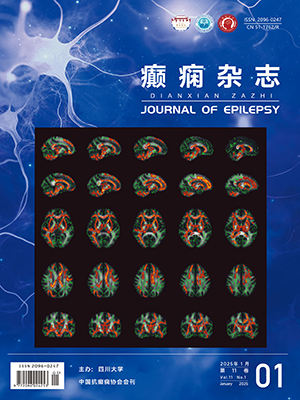| 1. |
Harvey AS, Cross JH, Shinnar S, et al. Defining the spectrum of international practice in pediatric epilepsy surgery patients. Epilepsia, 2008, 49(1): 146-155.
|
| 2. |
Pinheiro-Martins AP, Bianchin MM, Velasco TR, et al. Independent predictors and a prognostic model for surgical outcome in refractory frontal lobe epilepsy. Epilepsy Res, 2012, 99(1-2): 55-63.
|
| 3. |
Jeha LE, Najm I, Bingaman W, et al. Surgical outcome and prognostic factors of frontal lobe epilepsy surgery. Brain, 2007, 130(Pt2): 574-584.
|
| 4. |
Kral T, Kuczaty S, Blümcke I, et al. Postsurgical outcome of children and adolescents with medically refractory frontal lobe epilepsies. Childs Nerv Syst, 2001, 17(10): 595-601.
|
| 5. |
Vachhrajani S, de Ribaupierre S, Otsubo H, et al. Neurosurgical management of frontal lobe epilepsy in children. J Neurosurg Pediatr, 2012, 10(3): 206-216.
|
| 6. |
Ramantani G, Kadish NE, Mayer H, et al. Frontal lobe epilepsy surgery in childhood and adolescence: predictors of long-term seizure freedom, overall cognitive and adaptive functioning. Neurosurgery, 2018, 83(1): 93-103.
|
| 7. |
Samuel PJ, Menon RN, Chandran A, et al. Seizure outcome and its predictors after frontal lobe epilepsy surgery. Acta Neurol Scand, 2019, 140(4): 259-267.
|
| 8. |
Englot DJ, Wang DD, Rolston JD, et al. Rates and predictors of long-term seizure freedom after frontal lobe epilepsy surgery: a systematic review and meta-analysis. J Neurosurg, 2012, 116(5): 1042-1048.
|
| 9. |
Simasathien T, Vadera S, Najm I, et al. Improved outcomes with earlier surgery for intractable frontal lobe epilepsy. Ann Neurol, 2013, 73(5): 646-654.
|
| 10. |
Hirfanoglu T, Serdaroglu A, Kurt G, et al. Outcomes of resective surgery in children and adolescents with focal lesional epilepsy: The experience of a tertiary epilepsy center. Epilepsy Behav, 2016, 63: 67-72.
|




